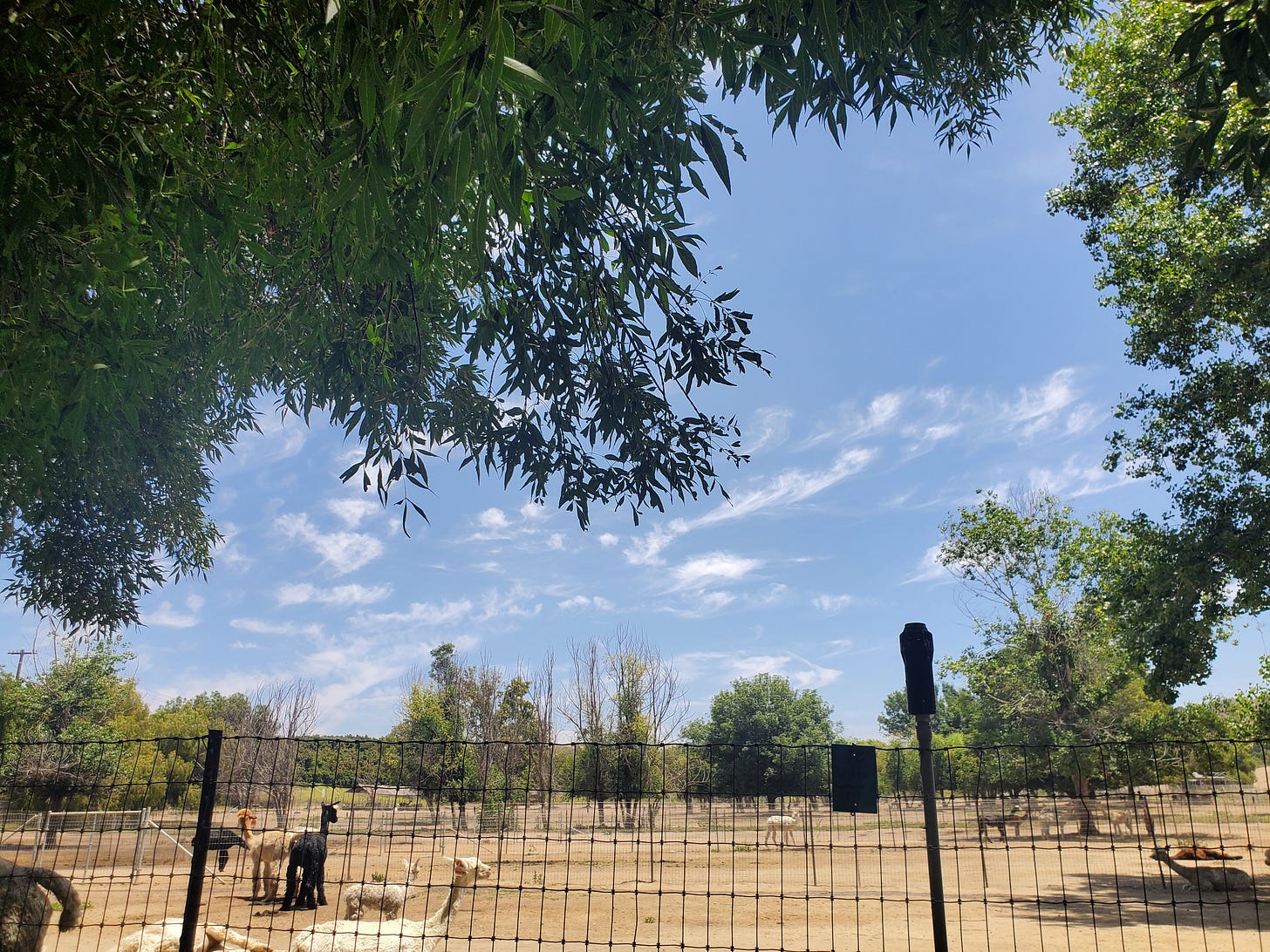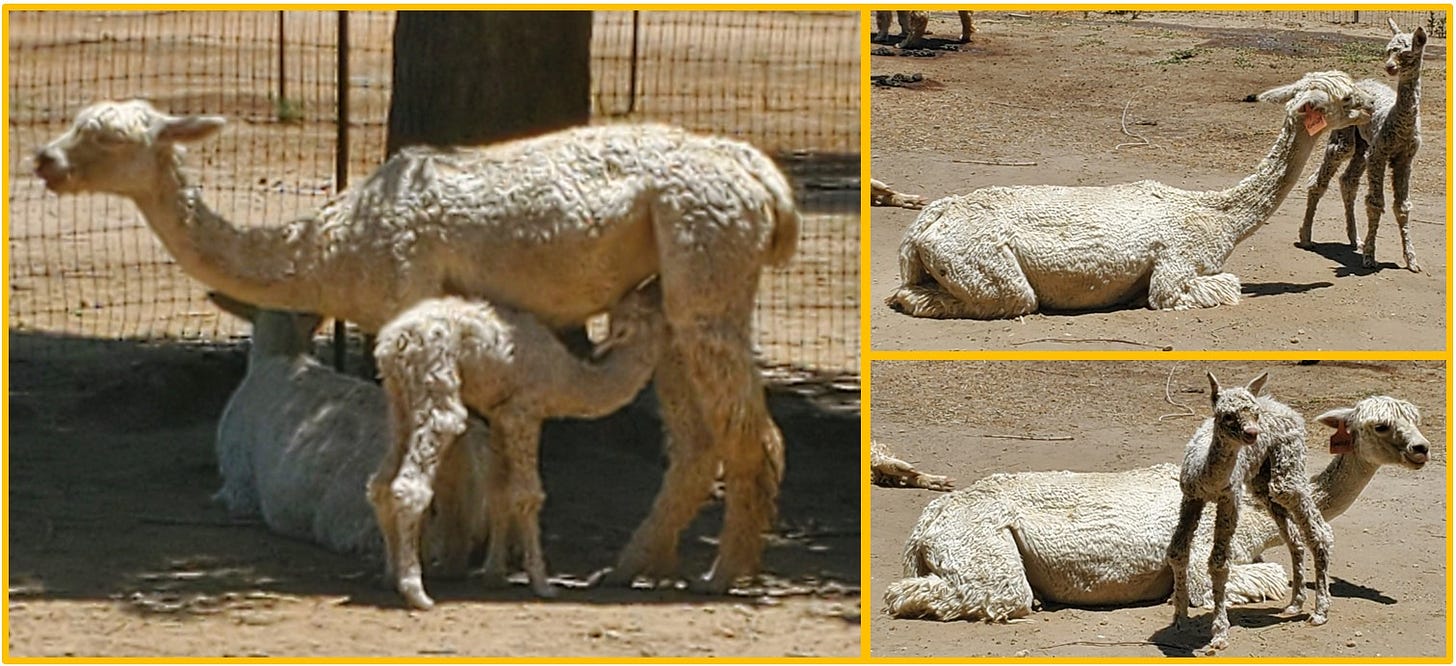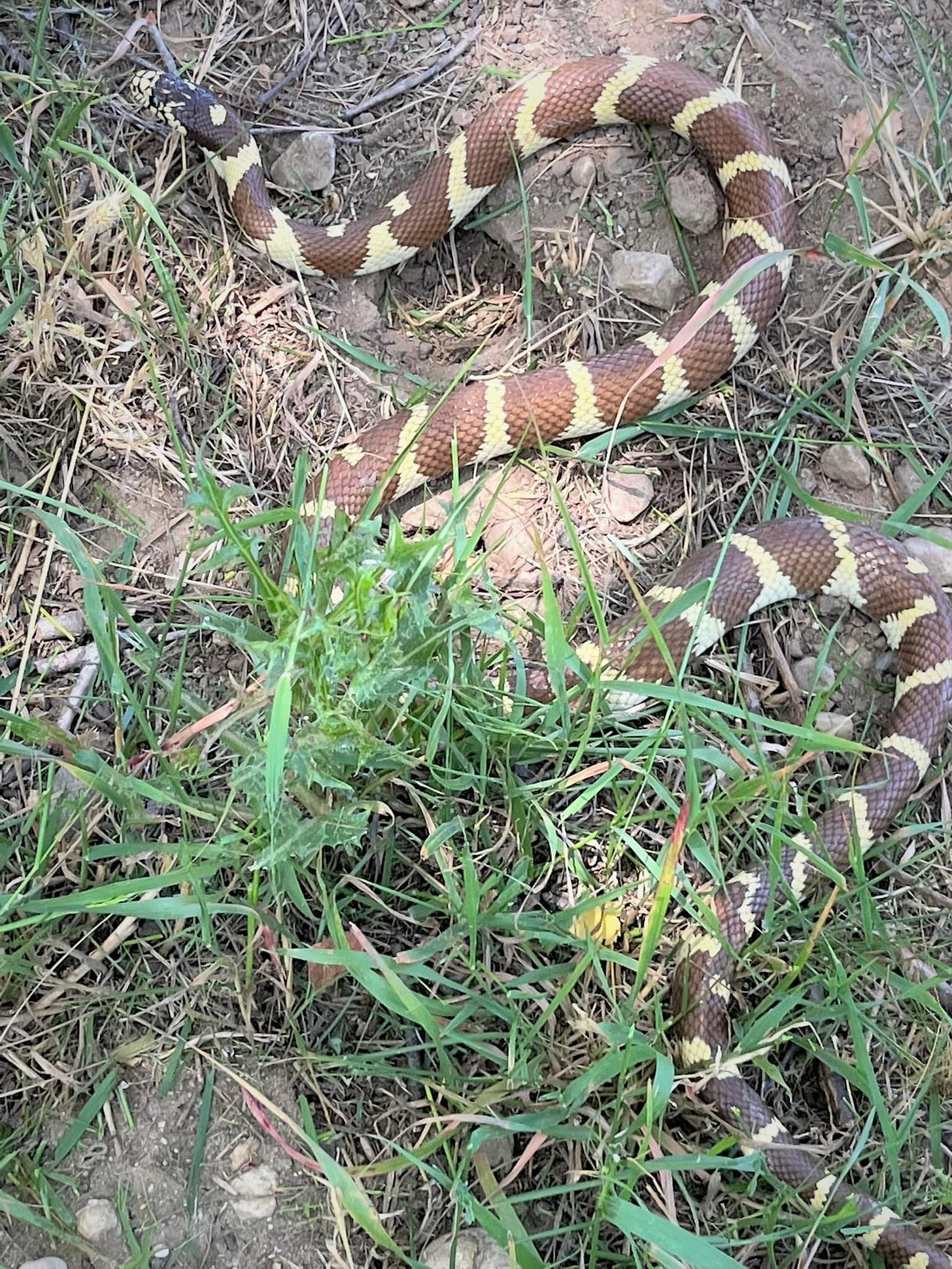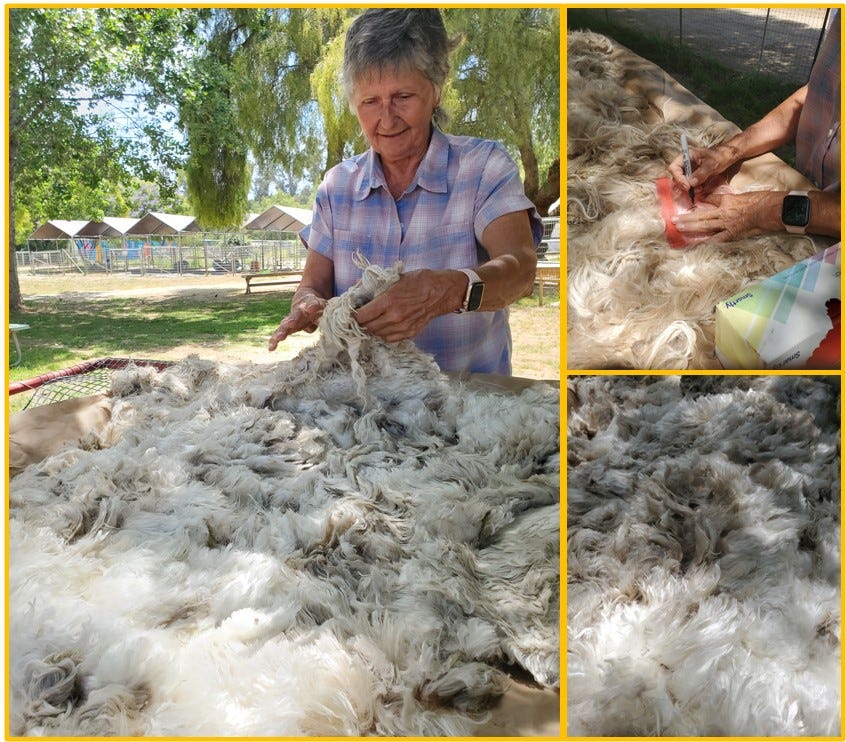Most weekly visits start with Cindy, owner of Alpacas at Windy Hill, & I sitting under the shade in the pepper tree grove looking out across the fields of alpacas, just checking in with each other.

Often, when Cindy starts talking, out come yet another chapter in her book of alpaca knowledge. Well, maybe not a whole chapter; more like the intro to a chapter. This week's knowledge drop was an Alpaca Birthing Primer. Here's what I learned:
As with humans, the pregnant alpaca "drops" the unborn cria (baby), signaling that birthing is close. It's visible as a hollow-looking indent just in front of the pregnant alpaca's high hip bones. Today, there were 2-3 pregnant alpacas where this was obvious.
During a healthy birth, the head and front feet come out first. Usually there's a little pause in labor, then the pregnant alpaca starts pushing again. If it's a big baby, getting the shoulders and chest expanded can be a challenge. This is when it can help to step in to assist the mama alpaca by holding the cria's front legs to ensure the cria doesn't slip back in when the mama relaxes after a contraction.
As soon as the cria’s chest expands, you're home free. As the mama alpaca walks around, the cria flops around - half in & half out - which helps the amniotic fluids drain out of its lungs, stomach, and other places where the amniotic fluids are. Within reason, the longer a cria hangs & flops around, the less congestion they'll have when they're actually on the ground. When the rest of the cria's body finally comes all the way out, it lands on its head and flops over.
It's important to watch the cria's behavior closely for the first 2-4 days.
The umbilical cord usually disconnects when the chest expands or when the cria drops out completely. But sometimes it breaks just before a cria takes its first breath. When this happens, the cria just don't seem to know where they are in time and space. It could be they have dummy syndrome, which happens when birth was so quick that the umbilicus detached nanoseconds before it took its first breath, which is just enough time to give a major brain fog. If the cria doesn't seem to know what to do, you've got to teach it how to use its legs, how to nurse, & get it up every half hour until the cria starts walking & suckling normally. Meanwhile, it's standard practice to treat the navel stump with an antiseptic as soon as possible and again about half an hour later.
If the cria is born under any kind of unusual stress it's more likely to get an infection, usually as a result of bacteria that got into the umbilicus or in their mouth. This can happen if cria isn't found right away and its umbilical stump didn't get dipped with an antiseptic.
Day-2 is usually the day that you'll start to see a cria look droopy. And if it looks droopy, it could be because it isn't nursing enough. But it could also be because they have some sort of low grade infection. So you want to take the cria's temperature & if you see anything over 101, start them on antibiotics, which can be given to it every day for five days. Though the vet says the antibiotic treatments can be stopped after three days if the cria rebounds & looks & acts strong & healthy, it's usually best to complete the five day antibiotic treatments.

A couple of years ago Cindy rescued a baby king snake from a hole. Today Don, the ranch manager found him again while doing some trimming. He's a beauty!

We (meaning Cindy) skirted a few of the best white Suri blankets from this year's shearing. The prime fleece, called the blanket, is wrapped in a large, wax-coated paper rectangles called "noodles." Paper is used instead of plastic to prevent fiber "sweating". Skirting is a term used to explain removing plant debris & lesser quality fleece found around the perimeter of the blanket. Samples of the finest quality are picked from the middle side of the blanket. I have not yet learned to reliably "skirt" a blanket.

The Suri Network All-Suri Fleece Show is the largest Suri fleece show in the world! Judging takes place the 3rd week of July. Good luck, Glisten!


